I think I will always associate Bitola with two places. The first is the city’s pedestrian promenade, which is almost brimming with life on the weekend and evenings. The second is the ruins of a Roman settlement with well-preserved floors laid in beautiful patterns.
Before coming to Bitola, I had heard that it was one of the most interesting cities in North Macedonia. Although, in retrospect, I have to say that if Bitola is not your thing, there is nothing to come here. There is not God knows what interesting here. Although you can be pleasantly surprised if you come, for example, from Prilep, because it is definitely nicer here. But also Bitola is a good base for the nearby Pelister National Park, where you can go trekking.
Heraclea – magical mosaics in Bitola
But the attraction of Bitola, and that beyond any doubt, are the mosaics in the ruins of the former basilica. For the first time in my life I had the opportunity to see such a tourist attraction at my fingertips and in addition completely, unfortunately, unprotected. It’s a shame, because I’m not convinced that the exposed floor mosaics of the former temple are weatherproof. Believe me there is much to look at and admire. There is a dog tied to a tree on some kind of rope, we will watch a lion gnawing out the entrails of a hunted animal.
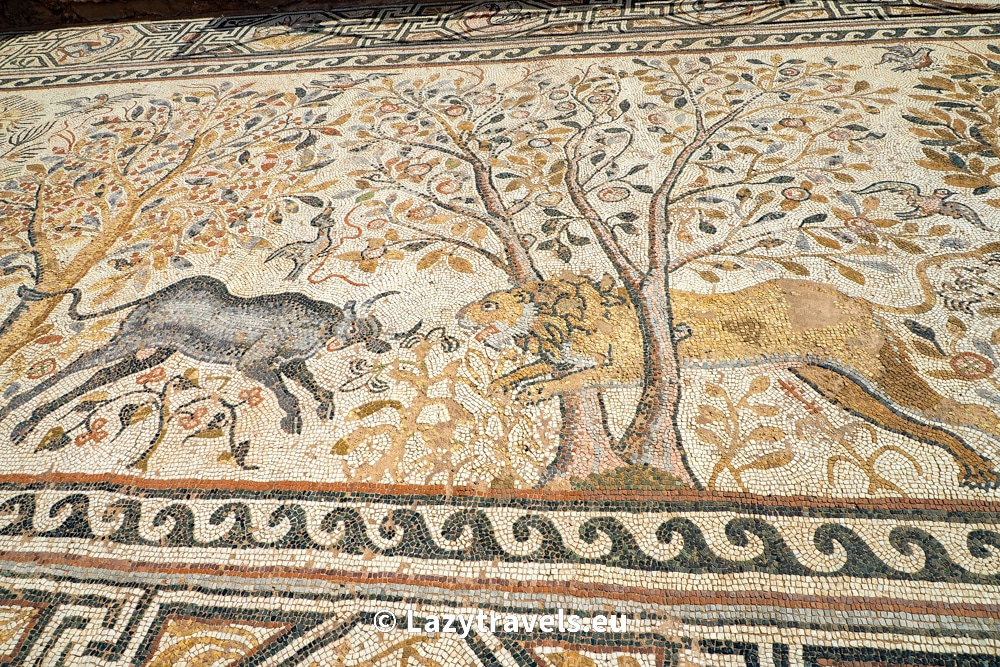
There are beautiful trees and in the midst of them a duel lion jumping on a bull. There are also peacocks and deer coming up to the cup, which I’m betting is some kind of Christian metaphor for drinking from God’s fountain. But that’s just my guess. Earlier I saw similar mosaics intricately arranged with colorful pebbles and tiny tiles in Croatian Pula, but there they were covered with a roof so that nothing accidentally happened to them. Here they are exposed to the weather.
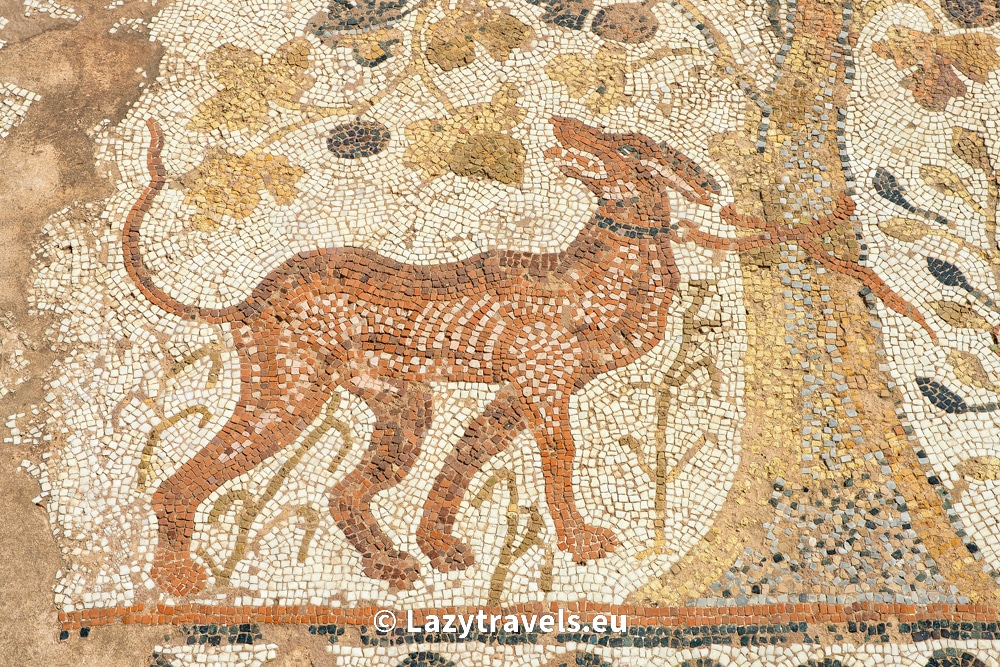
In any case, the ruins themselves are not very stunning, because the foundations are almost never beautiful to a layperson. But their outline gives an idea of the city’s former splendor and size. And of course, as it happens in the remains of an ancient city, the best preserved place is the amphitheater. But that’s not surprising either, after all, the stone steps on which the theater’s audience used to sit are hard to destroy. If you want to see more photos of the mosaics and learn something about Herakleia, I invite you to a separate article.
Širok Sokak – the main attraction – promenade of Bitola
Bitola has one place that is certainly attractive and when going to Macedonia, you should include Bitola as a place worth visiting. I have seen several interesting promenades in my life, but the one in Bitola is special because Širok Sokak is the backbone of the city. This is where life is concentrated and I dare say it is the creme de la creme of the locality. If you come to the promenade on a weekend evening, you will see a big party. If you are here on a weekend afternoon, all the pubs, restaurants and cafes will be filled. People will fill every cafe table and I recommend you, do as they do. Sit down, order a coffee and just watch the people passing by. I don’t know why, but all over the Balkans this is how coffee is spent and celebrated. Coffee as a human right, as I say 🙂
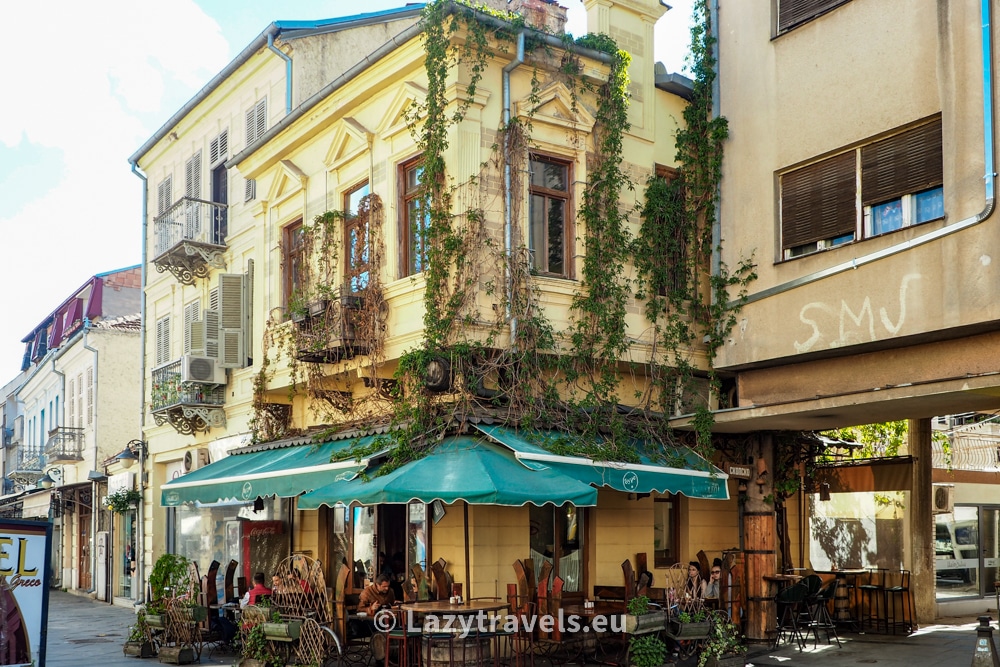
But people come precisely to Širok Sokak for a reason. This is where the most beautiful townhouses remain, this is where the consulates of foreign countries are, and this is where the architecture encourages people to spend time. Anyway, most of Bitola’s monuments and attractions are located right at Širok Sokak or in the immediate vicinity.
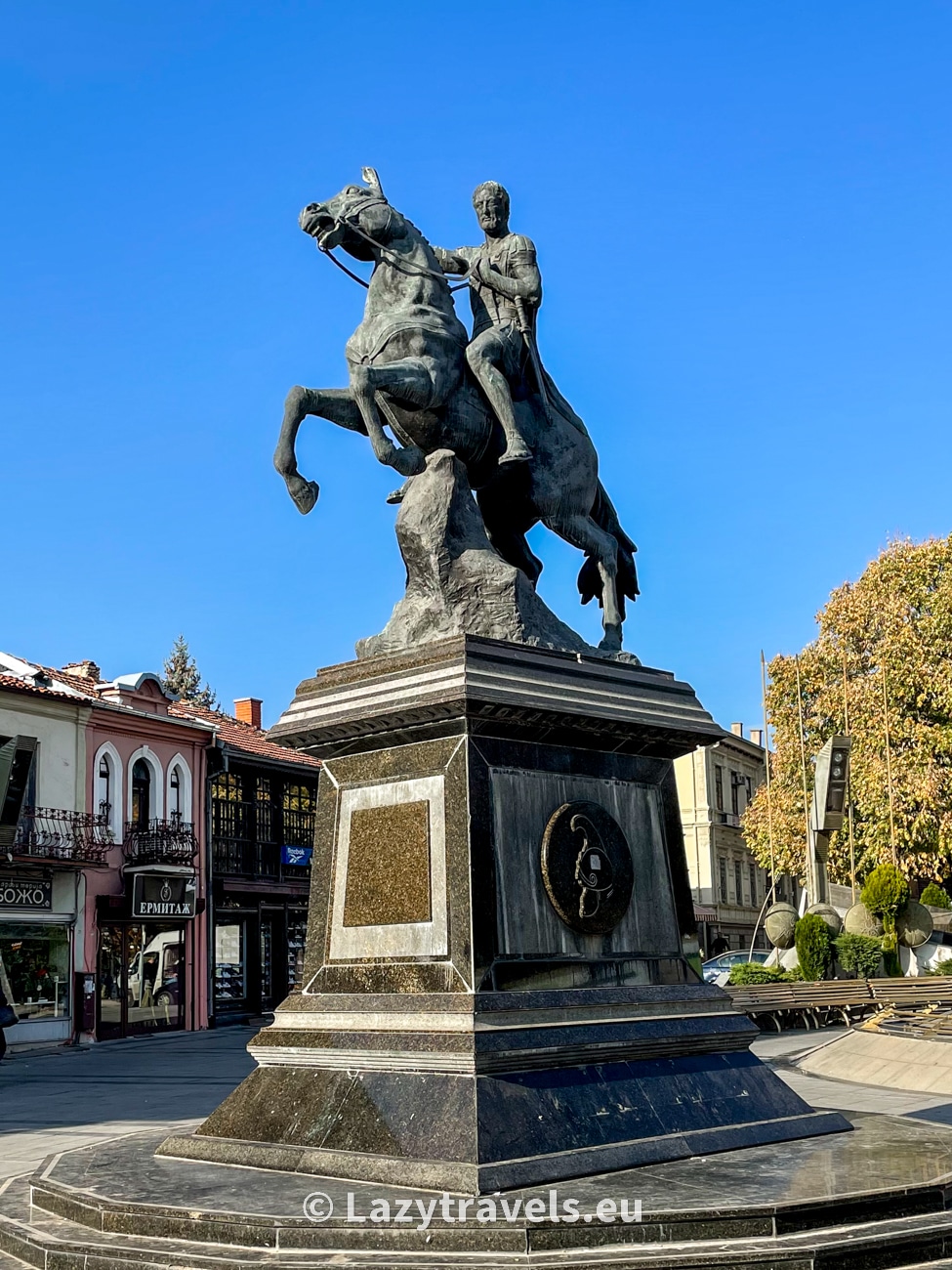
One of the most characteristic sights is the clock tower – Saat Kula – a 33-meter tall structure with sides 5 meters wide and 80 centimeters high, which is one of the symbols of the city. The building dates back to 1830, although references to the clock are said to date back to the 17th century. Unfortunately, it is not possible to enter the tower, which is a pity, because from the top one would certainly have a beautiful view of Bitola.
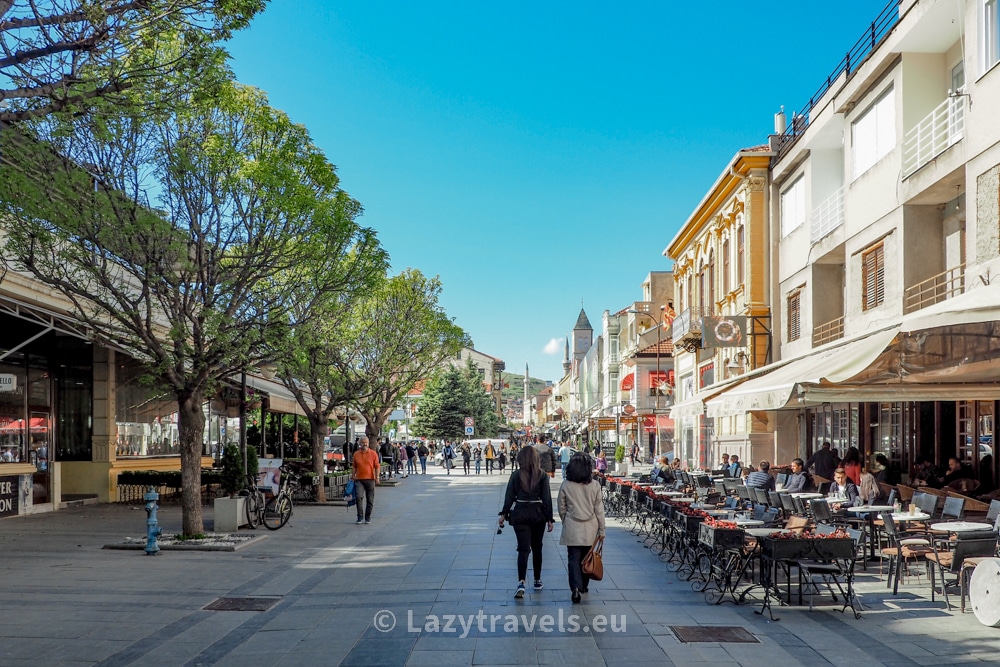
St. Dmitri’s Church
I like to see the sacred, although I am far from it myself. But I like sacred places for others. There is an interesting atmosphere in them, often the smell of incense, which I like, and the smell of history. St. Dmitri’s Orthodox Church in Bitola certainly counts among the places, worth a visit. The temple was built in 1830, when the Turks ruling the area gave permission for its construction. Interestingly, as a plaque at the church informs, the building was constructed in four months! From the outside there is no decoration, it is a seemingly modest temple. But it looks completely different from the inside, because the builders of the restrictions on the outside “reflected” on the inside.
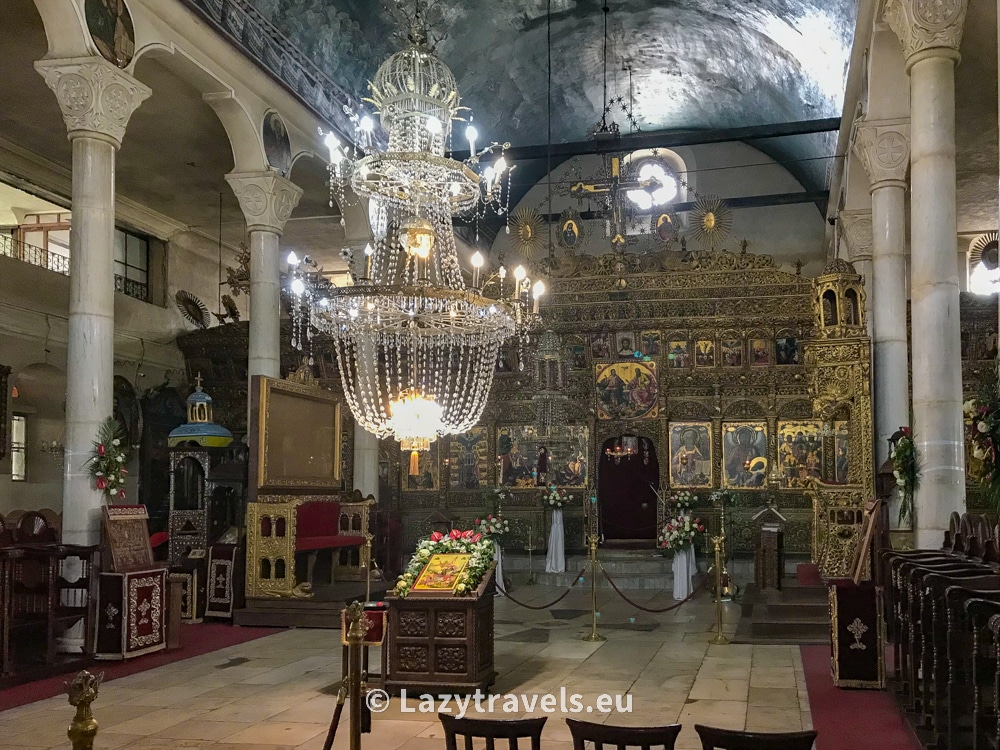
Here the decorations are definitely richer, and the iconostasis is impressive. The oldest icons, were written in the monastery of St. Naum near Ohrid in 1711, that is, long before this church was built. As a curiosity, I can also tell you that the temple originally had a wooden bell tower, although the word “bell tower” is also an exaggeration, because instead of bells there was a wooden knocker hanging in it! It was doing well until 1908, when it was replaced by a regular bell.
Other attractions of Bitola
What else can be visited in Bitola?
Jeni Mosque – New Mosque
While you are here you will definitely pay attention to the mosque standing nearby. It is the Jeni mosque. Jeni in Turkish means new. The building was erected in two years (1558-1559) and the minaret rises 39 meters above the surface of the ground. Today it is not an active temple but an art gallery. Unfortunately, at the time I visited Bitola, the institution was closed, so I won’t tell you what it looks like inside. From the outside, it is not stunning.
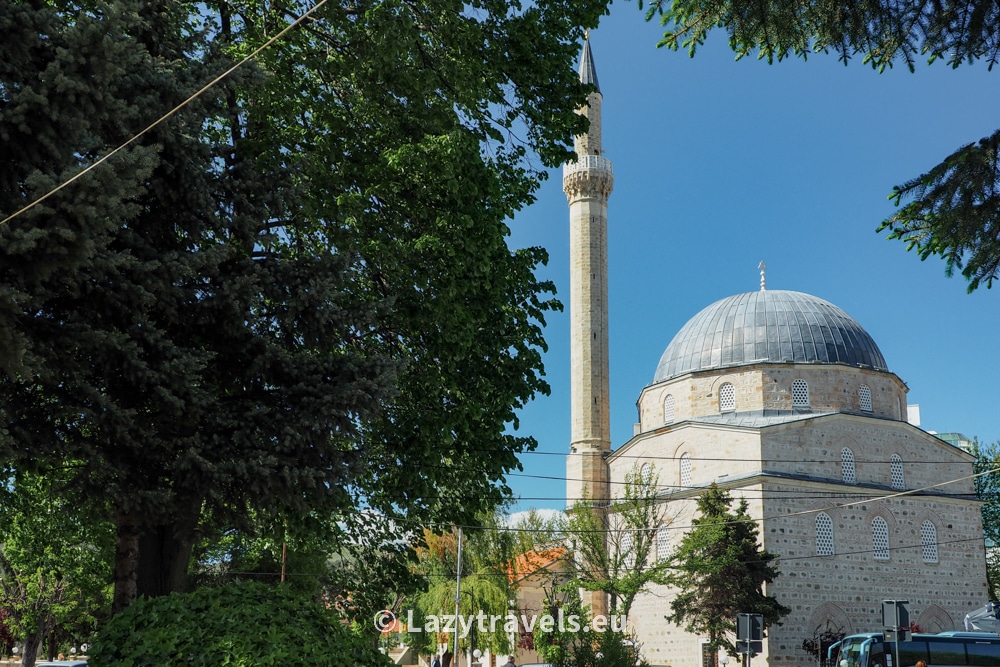
Bezisten – the former market hall
Right next to the mosque since the 16th century stands Bezisten, which means „market hall”. Once upon a time, when the Turks ruled the city, it was a lively place and here trade in goods flourished, here fortunes were born. Today it’s a rather sleepy place that is worldly only insofar as Chinese crap is traded here, and not even dust is left of its former glory. You can stop by here for literally five minutes, no more is needed. Standing on the square next to the fountain, which offers the best view of all the nearby attractions, our attention will surely be drawn to the ugly concrete monstrosities, which were erected here in defiance of reason and a sense of beauty in times long gone. Unfortunately, they haunt to this day and it is unlikely that anyone will dare to demolish these blocks.

Officers’ House, once ugly, today shines with newness
Therefore, to feast your eyes on something prettier, I suggest a walk along the aforementioned promenade, it is long, so we will have time to soothe our eyes from the ugly concrete. If we don’t happen to feel like grabbing a coffee or a meal of some sort, you’re sure to eventually come to a large white house. This is the Officers’ House, which began construction in 1909, but presumably due to more pressing war-related expenses, the structure was not completed until after the end of the First World War. As you can easily guess, it was a place intended only for officers and generals. You can read more about it at this link. Today, unfortunately, the building is deteriorating, and is only used by young people drinking drinks of all kinds on its steps.
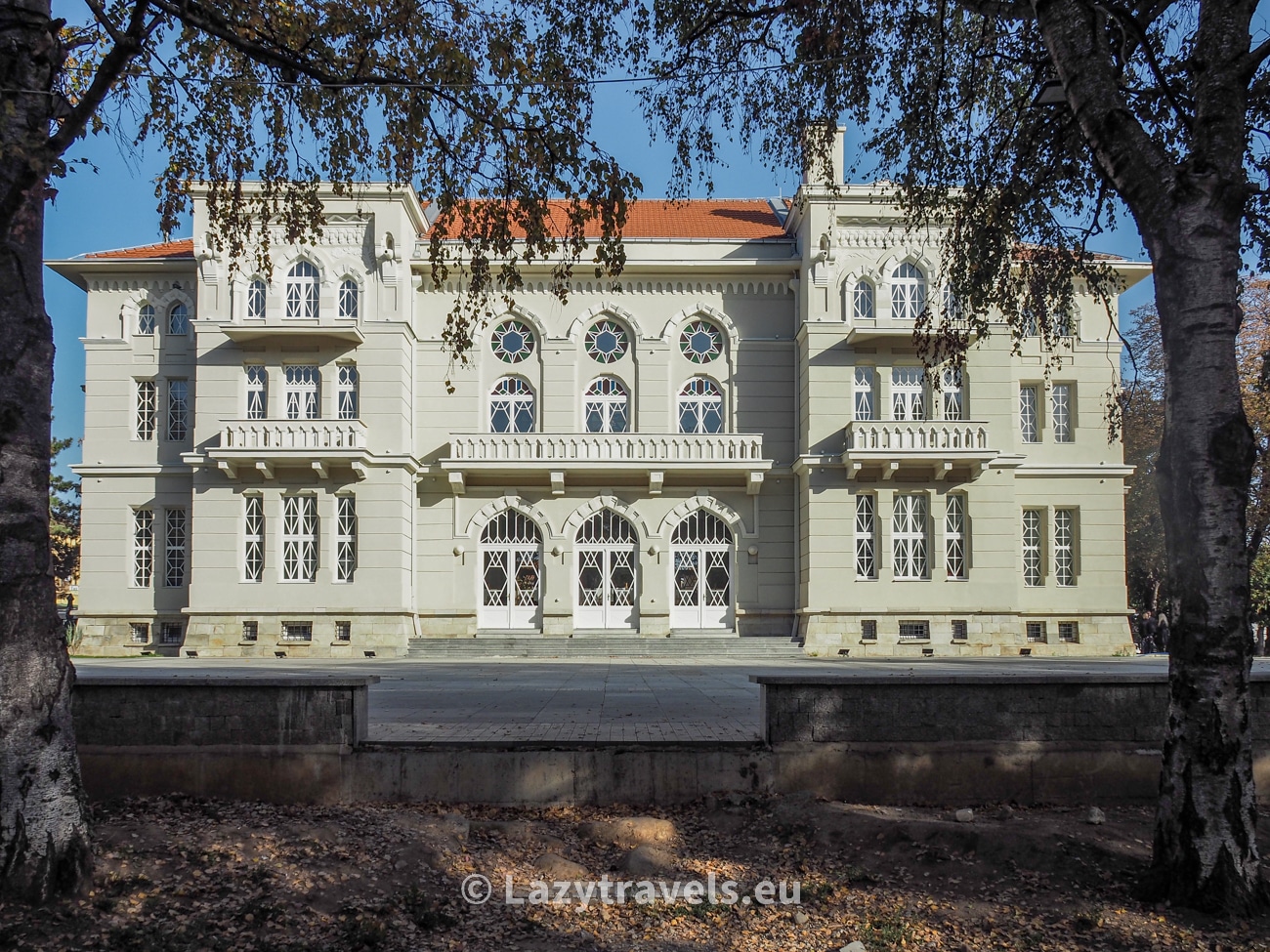
And here is the Officers’ House already after renovation. From under a layer of neglect emerged a real gem.
Zandan Kule or prison in a tower
There is also an attraction in Bitola that is more unusual and distant from the center and other interesting objects that tourists are used to seeing. It is the Zandan Kule or tower prison. To come here, you have to walk about 800 meters from the clock tower described above. The stone structure was built around 1628 on the orders of Hadzı Mahmud Efendi, who had it built to make him feel safer. Ot such a private tower of last defense. During the 1903 Ilinde uprising against the Ottomans, a prison functioned in the tower, hence its present name.
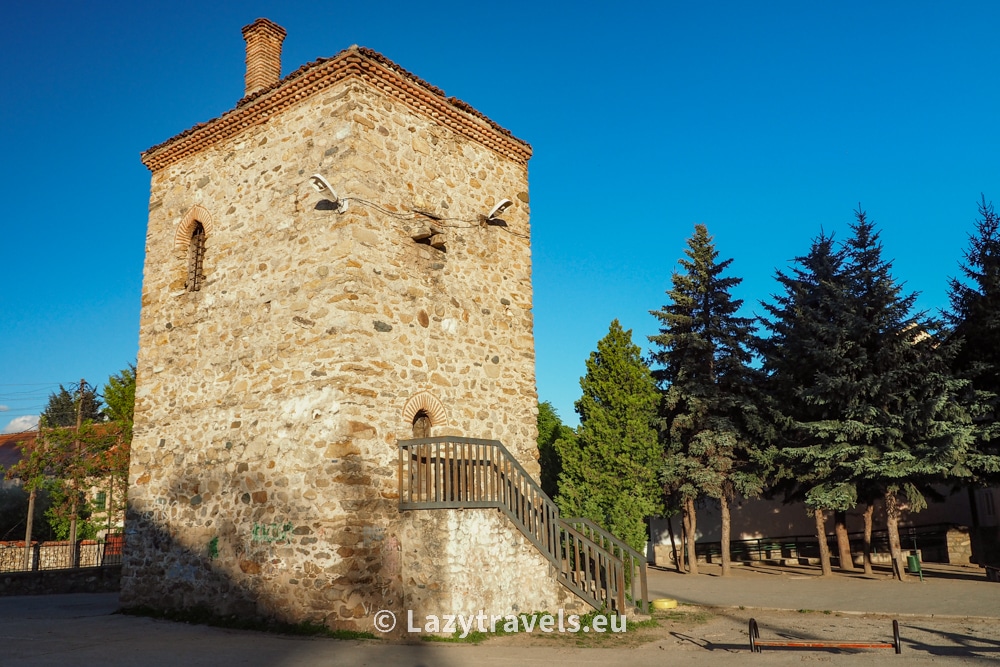
And that would be it as far as attractions and sights of Bitola are concerned. In guidebooks and on the Internet you may come across that Bitola is a charming town, one of the most interesting in Macedonia, and even that the most interesting after the capital, Skopje. Honestly? I don’t share this enthusiasm, but I’m also not saying that it’s not worth coming here. Certainly half a day in Bitola will be intense and interesting. And then you can go further, for example, to beautiful Ohrid, to explore Ohrid and the surrounding attractions for a few days.
Accommodation in Bitola
If you have decided to stay in Bitola and not just sightseeing in passing, you need to find some accommodation. I slept at Villa Diamond ie a place that offers a reasonable price for decent quality. I recommend it because it’s close to all the attractions of Bitola. And if you prefer to find something else,
look for accommodation through this search engine.
Bitola’s surroundings
Bitola can become an interesting base for visiting the surrounding attractions. The biggest attraction without a doubt is the Pelister National Park, where trekkers and mountain lovers can go out on the trails to enjoy the beautiful nature. Most importantly, there are really few tourists on the trail, so you can hike for hours and not meet a single person.

If we have little time, it is possible to get from Bitola to Ohrid within an hour or an hour and a half, and this is the most beautiful city in North Macedonia. And if we time everything well, Prilep and its surrounding mountains are also attainable for a day trip. With the Treskavets monastery in the lead.

